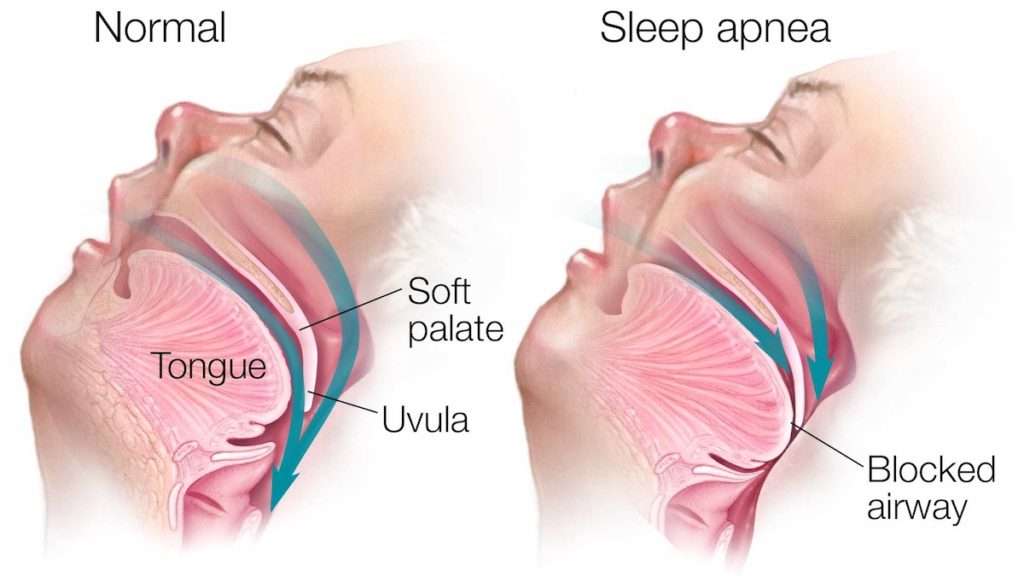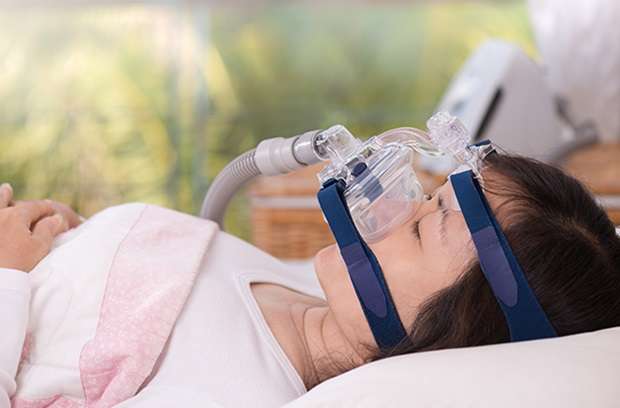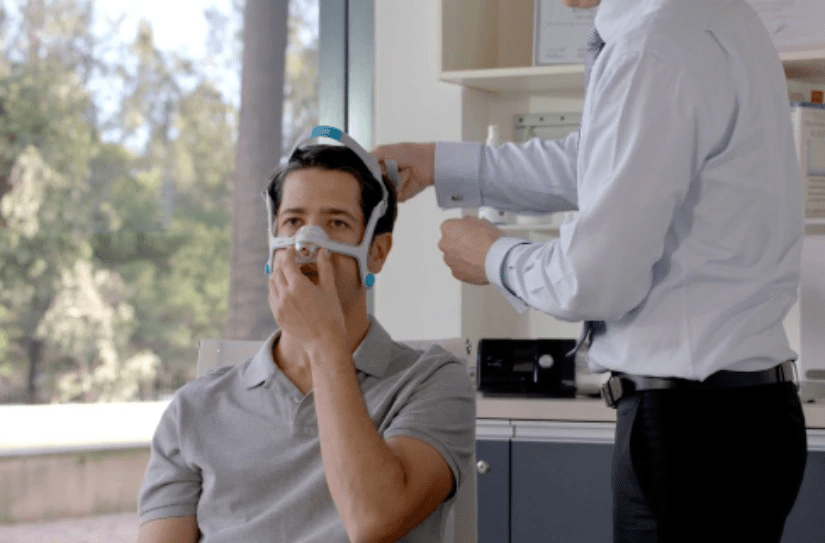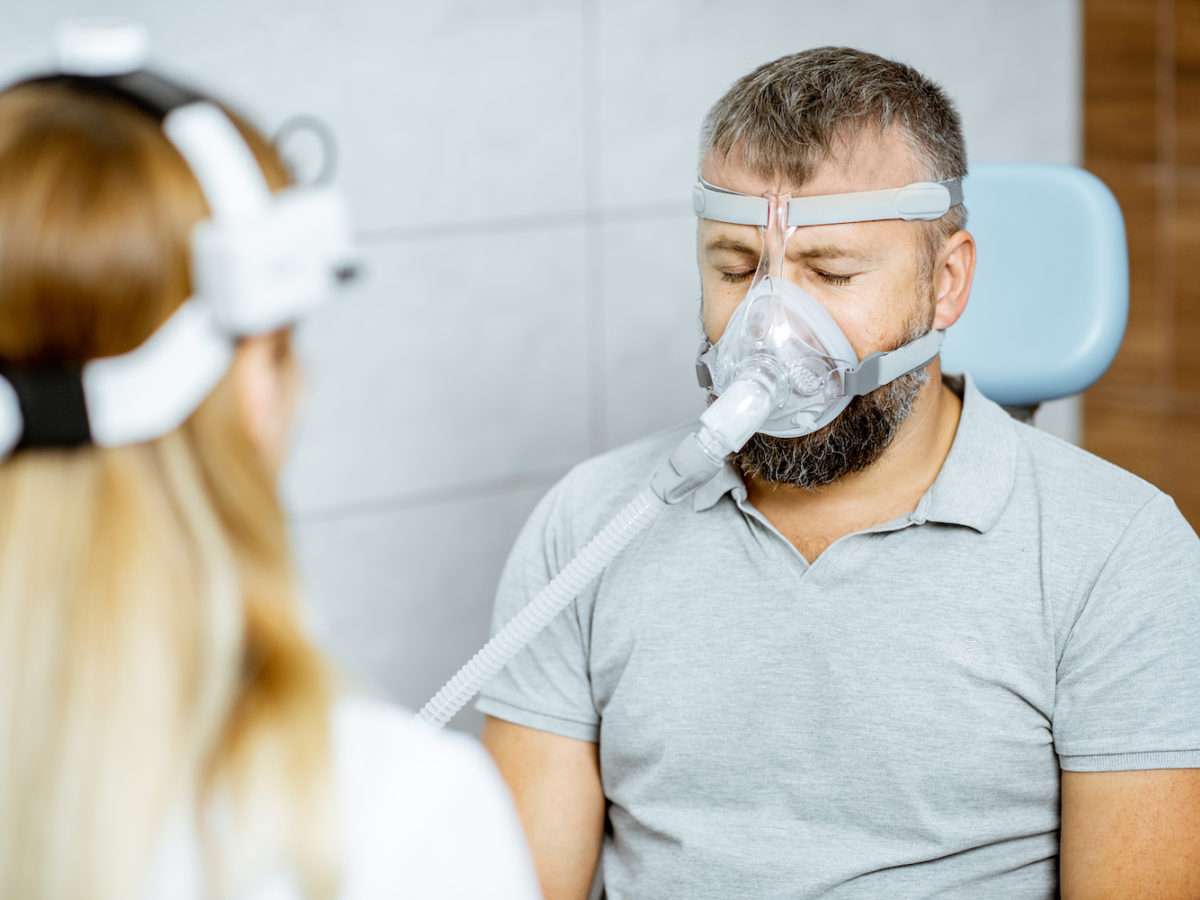Obstructive Sleep Apnea Treatment
Overview Obstructive Sleep Apnea Treatment
Obstructive sleep apnea is the most common sleep-related breathing disorder. It causes you to repeatedly stop and start breathing while you sleep.
There are different types of sleep apnea, but the most common is obstructive sleep apnea. This type of apnea occurs when your throat muscles relax intermittently during sleep and block your airway. A telltale sign of obstructive sleep apnea is snoring.
Treatment for obstructive sleep apnea is available. One treatment is a device that uses positive pressure to keep the airway open while you sleep. Another option is a mouthpiece that protrudes your jaw while you sleep. In some cases, surgery is also an option.


Symptoms
- Excessive daytime sleepiness
- Loud snoring
- Observed episodes of stopped breathing during sleep
- Abrupt awakenings accompanied by gasping or choking
- Awakening with a dry mouth or sore throat
- Morning headache
- Difficulty concentrating during the day
- Mood changes, such as depression or irritability
- High blood pressure
- Decreased libido
When to see a doctor
Consult a medical professional if you have, or if your partner observes, the following:
- Snoring loud enough to disturb your sleep or that of others
- Waking up gasping or choking
- Pausing in your breathing during sleep
- Having excessive daytime drowsiness, which may cause you to fall asleep while working, watching television or even driving a vehicle
Abstract
The diagnosis and treatment of obstructive sleep apnea is discussed in the context of recent diagnostic and therapeutic advances.
Introduction
Obstructive sleep apnea (OSA) is characterized by episodes of pauses or shallow breathing during sleep. These episodes are due to complete or partial collapse of the upper airway. Most often, respiratory events were associated with snoring, oxygen desaturation, and brief sleep arousals.
Sleep apnea is usually worse during supine and REM (rapid eye movement) sleep. Drinking alcohol or taking sedatives can make snoring and OSA worse.
Diagnostic Criteria Obstructive Sleep Apnea Treatment
Modified from International Classification of Sleep Disorders – Third edition (ICSD-3)5 (A and B) or C satisfies the criteria:
A. The presence of one or more of the following
- The patient complains of sleepiness, nonrestorative sleep, fatigue, or insomnia.
- The patient wakes with breath holding, gasping, or choking.
- The bed partner or an observer reports habitual snoring or breathing interruptions in sleep.
- The patient has hypertension, a mood disorder, cognitive dysfunction, coronary artery disease, stroke, congestive heart failure, atrial fibrillation, or type 2 diabetes mellitus.
B. Polysomnography (PSG) or out-of-center sleep testing (OCST) demonstrates
Five or more predominantly obstructive respiratory events (obstructive apneas, hypopneas, or respiratory effort related arousals [RERAs]) per hour of sleep during a PSG or per hour of monitoring (OCST).
C. PSG or OCST demonstrates
Fifteen or more predominantly obstructive respiratory events (apneas, hypopneas, or RERAs) per hour of sleep during a PSG or per hour of monitoring (OCST).
Lifestyle and home remedies
In many cases, self-care may be the most appropriate way for you to deal with obstructive sleep apnea. Try these tips:
- Lose weight. If you’re overweight or obese, even a moderate loss of excess weight may help relieve constriction of your airway. Losing weight can also improve your health and quality of life and might reduce your daytime sleepiness.
- Exercise. Exercising, such as aerobic exercise and strength training, can help improve your condition. Aim to exercise about 150 minutes a week, and generally try to exercise most days of the week.
- Avoid alcohol and medications such as anti-anxiety drugs and sleeping pills. Alcohol, some anti-anxiety medications, and some sleeping pills can worsen obstructive sleep apnea and sleepiness.
Sleep on your side or stomach rather than on your back. Sleeping on your back can cause your tongue and soft palate to rest against the back of your throat and block your airway.
To prevent sleeping on your back, try sewing a tennis ball in the back of your pajama top or place pillows behind you while you sleep on your side.
- Keep your nasal passages open while you sleep. If you have congestion, use a saline nasal spray to help keep your nasal passages open. Talk to your doctor about using nasal decongestants or antihistamines, because some medications may be recommended for only short-term use.
Treatment
Lifestyle changes
Obstructive Sleep Apnea Treatment For milder cases of obstructive sleep apnea, your doctor might recommend lifestyle changes:
- Lose weight if you’re overweight.
- Exercise regularly.
- Drink alcohol moderately, if at all. Don’t drink in the hours before bedtime.
- Quit smoking.
- Use a nasal decongestant or allergy medications.
- Don’t sleep on your back.
- Avoid taking sedative medications such as anti-anxiety drugs or sleeping pills.
If these measures do not improve your sleep, or if your apnea is moderate to severe, your doctor may recommend other treatments. Certain devices can help open blocked airways. In other cases, surgery may be required.
Conclusion
OSA is a serious disease that affects approximately 12 percent of India adults. Most patients go undiagnosed and pose a serious public health and economic burden. The STOP-BANG score serves as a reliable screening tool to identify patients who may have OSA. Appropriate treatment modalities should be instituted after early diagnosis in the laboratory using PSG or HSAT.
Currently, CPAP remains the treatment of choice for moderate and severe OSA. Although not as effective as CPAP, there are acceptable alternatives for patients with mild OSA and severe OSA who cannot tolerate or adhere to CPAP. New therapies continue to emerge as the search for the most effective and best-tolerated treatments continues.
Frequently Asked Questions
#apnea #primary care #diagnose #medicine #obstructive #symptoms #care physicians #cpap
An evaluation by a heart specialist, known as a cardiologist, or a doctor who specializes in the nervous system, called a neurologist, might be necessary to look for causes of central sleep apnea.Obstructive Sleep Apnea Treatment
Yes, ENT (ear, nose, and throat) doctors can treat obstructive sleep apnea. Obstructive sleep apnea (OSA) is a sleep disorder that is caused by an obstruction of your airway during sleep.
It is characterized by snoring, pauses in breathing, and gasping for air. ENTs are medical specialists that specialize in diagnosing and treating disorders and diseases of the ear, nose, and throat.
This includes conditions that affect your breathing, such as obstructive sleep apnea. When diagnosing and treating OSA, an ENT will perform a physical examination and take a medical history.
They may also order tests, such as a sleep study, to look for signs of OSA. If OSA is diagnosed, an ENT may recommend lifestyle changes, such as weight loss, avoiding alcohol and smoking, as well as sleeping on your side.
Obstructive sleep apnea (OSA) is a disorder characterized by recurrent episodes of partial or complete upper airway obstruction during sleep. It is a common sleep disorder that can have serious implications for a person’s overall health and well-being.
The most effective treatment for patients with OSA is continuous positive airway pressure (CPAP) therapy. CPAP therapy is a non-invasive treatment that uses a machine to deliver a steady stream of pressurized air to keep the airway open while sleeping.
The pressure is adjusted to match the individual’s needs and is typically determined by a sleep specialist. The CPAP machine is connected to a mask that fits over the nose or mouth and is worn while sleeping.
Obstructive sleep apnea (OSA) is a disorder in which breathing is periodically stopped or reduced while you’re asleep because the muscles in your neck and tongue aren’t able to maintain the airway open despite your efforts to breathe, depriving your body of oxygen.
Continuous positive airway pressure (CPAP)
Because it can reduce the symptoms of OSA7 and enhance quality of life, CPAP is regarded as the gold standard treatment for the condition. Via the use of a mask interface, CPAP functions as a pneumatic splint that maintains consistent positive pressure in the upper airway.
Inspire is an alternative to CPAP that works inside your body while you sleep. It’s a small device placed during a same-day, outpatient procedure. When you’re ready for bed, simply click the remote to turn Inspire on. While you sleep, Inspire opens your airway, allowing you to breathe normally and sleep peacefully.
“The only way to ‘cure’ sleep apnea naturally is with significant lifestyle changes,” notes Dr. May. Generally, sleep apnea symptoms like daytime sleepiness and comorbidities like heart disease and excess weight can be treated thus. For example, daytime sleepiness can be curbed with a cup of coffee.
Positive airway pressure (PAP) is first-line therapy for all patients with moderate to severe OSA, those with mild OSA syndrome, and any patients with significant comorbidities (e.g. depression, diabetes, hypertension). 8 PAP works as a pneumatic splint, relieving upper airway obstruction during sleep.
Obstructive sleep apnea is considered a serious medical condition. Complications can include: Daytime fatigue and sleepiness. Because of a lack of restorative sleep at night, people with obstructive sleep apnea often have severe daytime drowsiness, fatigue and irritability.
If left untreated, obstructive sleep apnea can shorten your life from anywhere between 12-15 years. While there is no permanent cure for obstructive sleep apnea, diagnosis and treatment will alleviate its effects. Proper treatment can ensure that your OSA won’t shorten your life.
Lachesis is considered as the best homeopathic medicine for curing sleep apnea. Lachesis cures the sleeping problem caused due to the frequent relaxation of the throat muscles. If you’re suffering from sleep apnea, you can take the medicine Lachesis.
Obesity, large tonsils, or changes in hormone levels can all restrict the airway and raise the chance of developing obstructive sleep apnea. When your brain fails to send the impulses required to breathe, central sleep apnea results.
Anyone at any age can have obstructive sleep apnea, but it’s most common in middle-aged and older adults. Only about 2% of children have obstructive sleep apnea. It’s also more common in men than in women.
Maxillomandibular advancement (MMA) is one of the procedures with the best success rates for treating sleep apnea, with a rate of roughly 87%. According to other studies, it ranges between 75% and 100%. However, due of the jaw displacement, specialists warn that it creates drastic alterations in physical appearance.
Yes. Ayurveda offers effective treatment for Sleep apnea through various internal medicines, treatment procedures and body purification therapies.
Obstructive sleep apnea is classified by severity: Severe obstructive sleep apnea means that your AHI is greater than 30 (more than 30 episodes per hour) Moderate obstructive sleep apnea means that your AHI is between 15 and 30. Mild obstructive sleep apnea means that your AHI is between 5 and 15.
Sleep apnea and snoring: Obstructive sleep apnea causes the airways to close off when a person is asleep, resulting in breathing pauses. It frequently occurs along with snoring. You can lessen snoring and mild apnea by lying on your side or stomach to keep the airways open. Salas cites
Vitamins C, D, E, B6 and B12 all play a significant role in health and each of these has been shown to be very effective in combating sleep apnea and helping ensure good health
Males are two to three times as likely than women to develop sleep apnea. But, women who are overweight or have undergone menopause are at higher risk. being more senior. Older persons are considerably more likely to have sleep apnea.
When a child stops breathing while they are asleep, it is called obstructive sleep apnea (OSA). The airway is usually blocked (obstructed), which results in the stoppage of breathing. Children of all ages can develop obstructive sleep apnea, but those with it tend to be between the ages of two and six.
- Bananas. Bananas are full of healthful nutrients, and they are delicious. …
- Refined Carbohydrates. Whole grain foods are great for your health because they contain lots of nutrients and contribute to satiety. …
- Dairy. …
- Alcohol. …
- Fatty Meats.
The major risk factors for obstructive sleep apnea are obesity, a family history of snoring or apnea, and being male



Obstructive Sleep Apnea Treatment
Are you looking for a sleep apnea doctor in Kolkata? If so, you’ve come to the right place. Sleep apnea is a sleep disorder that can have serious and long-term effects on your health and wellbeing. It is important to find an experienced and knowledgeable doctor who can provide the best care for your condition.
Dr. Hironmoy Sil
35 Years Experience
Address:60 d/1A doctor S.C.banerjee Road , kolkata-700010
Contact: +91-09830022224
Timing: MON-SAT ( 08:00 AM – 9:00 PM )
WorkExperience: 25 Years+ of experience
Sleep apnea is a serious sleep disorder that is increasingly affecting people in Kolkata, India. It is characterized by pauses in breathing during sleep and can lead to a variety of health problems, including heart and lung issues. If you think you may have sleep apnea, it is important to get tested. But how much does a sleep apnea test cost in Kolkata?
Dr. Hironmoy Sil
35 Years Experience
Address:60 d/1A doctor S.C.banerjee Road , kolkata-700010
Contact: +91-09830022224
Timing: MON-SAT ( 08:00 AM – 9:00 PM )
WorkExperience: 25 Years+ of experience
Are you looking for a sleep apnea doctor near you? If so, you’ve come to the right place! Sleep apnea is a serious medical condition that affects millions of people around the world, and if left untreated, it can be very dangerous. That’s why it’s important to find a sleep apnea doctor who can help you get the treatment and support you need.
Dr. Hironmoy Sil
35 Years Experience
Address:60 d/1A doctor S.C.banerjee Road , kolkata-700010
Contact: +91-09830022224
Timing: MON-SAT ( 08:00 AM – 9:00 PM )
WorkExperience: 25 Years+ of experience
Therapy includes self-care.
Therapy frequently entails modifying one’s way of life, such as losing weight and sleeping with a breathing machine like a continuous positive airway pressure (CPAP) machine.
- Lose weight if you’re overweight.
- Exercise regularly.
- Drink alcohol moderately, if at all. Don’t drink in the hours before bedtime.
- Quit smoking.
- Use a nasal decongestant or allergy medications.
- Don’t sleep on your back.
- Avoid taking sedative medications such as anti-anxiety drugs or sleeping pills.
Throughout the past two decades, there has been a significant advancement in our knowledge of the causes and effects of upper-airway obstruction in adults during sleep. It’s common to have sleep apnea, which is characterised by recurrent bouts of obstructive apnea and hypopnea during sleep, as well as daytime sleepiness or decreased cardiopulmonary function.
A CPAP substitute called Inspire operates inside your body while you sleep. It is a tiny gadget that is inserted via an outpatient, same-day operation. Simply press the on button on the remote to turn on Inspire when you’re ready for bed. By widening your airway while you sleep, Inspire enables you to breathe correctly and have a restful night’s sleep.
obstructive sleep apnea icd 10
obstructive sleep apnea treatment
mild obstructive sleep apnea
moderate obstructive sleep apnea
obstructive sleep apnea occurs when quizlet
obstructive sleep apnea in children
obstructive sleep apnea va rating
obstructive sleep apnea surgery
obstructive sleep apnea doctor
obstructive sleep apnea and hypertension
obstructive sleep apnea adenoid removal
obstructive sleep apnea and bed wetting
obstructive sleep apnea and obesity
obstructive sleep apnea and central sleep apnea
obstructive sleep apnea ahi
obstructive sleep apnea and heart failure
obstructive sleep apnea and pulmonary hypertension
obstructive sleep apnea and burn pits
obstructive sleep apnea and anesthesia
ahi obstructive sleep apnea
apa itu obstructive sleep apnea
asthma and obstructive sleep apnea
aasm criteria for obstructive sleep apnea
abg in obstructive sleep apnea
anatomy of obstructive sleep apnea
ayurvedic treatment for obstructive sleep apnea
atrial fibrillation and obstructive sleep apnea
aafp obstructive sleep apnea
a hospitalized client with a history of obstructive sleep apnea
obstructive sleep apnea bipap
obstructive sleep apnea baby
obstructive sleep apnea bed wetting
obstructive sleep apnea breathing pattern
obstructive sleep apnea blood pressure
obstructive sleep apnea bradycardia
obstructive sleep apnea but not overweight
obstructive sleep apnea brain damage
obstructive sleep apnea but no snoring
obstructive sleep apnea bed wetting adults
best sleeping position for obstructive sleep apnea
benzodiazepines and obstructive sleep apnea
best pillow for obstructive sleep apnea
best treatment for obstructive sleep apnea
baby obstructive sleep apnea
best way to sleep with obstructive sleep apnea
bipap for obstructive sleep apnea
best homeopathy for obstructive sleep apnea
berlin questionnaire obstructive sleep apnea
benefits of treating obstructive sleep apnea
obstructive sleep apnea causes
obstructive sleep apnea child
obstructive sleep apnea cure
obstructive sleep apnea can result in
obstructive sleep apnea cpap
obstructive sleep apnea code
obstructive sleep apnea cpt code
obstructive sleep apnea criteria
obstructive sleep apnea cpap machine
obstructive sleep apnea care plan
causes of obstructive sleep apnea
central sleep apnea vs obstructive sleep apnea
can you die from obstructive sleep apnea
can obstructive sleep apnea be cured
can obstructive sleep apnea kill you
central and obstructive sleep apnea
cpt code for obstructive sleep apnea
cure for obstructive sleep apnea
child obstructive sleep apnea
can i claim pip for obstructive sleep apnea
obstructive sleep apnea definition
obstructive sleep apnea diagnosis
obstructive sleep apnea death
obstructive sleep apnea device
obstructive sleep apnea diagnosis code
obstructive sleep apnea disability
obstructive sleep apnea deviated septum
obstructive sleep apnea differential diagnosis
obstructive sleep apnea diagnosis criteria
difference between sleep apnea and obstructive sleep apnea
diagnosis of obstructive sleep apnea
define obstructive sleep apnea
definition of obstructive sleep apnea
does inspire work for obstructive sleep apnea
does obstructive sleep apnea go away
diagnosis and management of childhood obstructive sleep apnea syndrome
diagnostic criteria for obstructive sleep apnea
doctor for obstructive sleep apnea
drugs for obstructive sleep apnea
obstructive sleep apnea etiology
obstructive sleep apnea exercises
obstructive sleep apnea effects
obstructive sleep apnea epidemiology
obstructive sleep apnea en espanol
obstructive sleep apnea events
obstructive sleep apnea enlarged tonsils
obstructive sleep apnea explained
obstructive sleep apnea education
obstructive sleep apnea example
10 years HOD of Physiotherapy at B.M Birla Heart Research Centre
10 years Head Consultant at Woodland Nursing Home for another
Till Now President of Alumni of National Institute for the Orthopaedically Handicapped
Member of Spastic Society of Eastern India / Indian Institute of Cerebral Palsy
Member of The Chartered Society Physiotherapy (U.K.)
Associated with Apollo Family Clinic, Microlab Nursing Home, Suraksha Polyclinic, Health Point Nursing Home, Aurobindo
Seva Kendra (E.E.D.F) and Wockhardt Hospital and Kidney Institute.
- Restoring lumbar independence: Uncovering the benefits of physiotherapy in the management of lumbar spondylosis. - June 29, 2023
- Chest physiotherapy - May 9, 2023
- Back Pain Relief - April 21, 2023
Table of Contents
Toggle